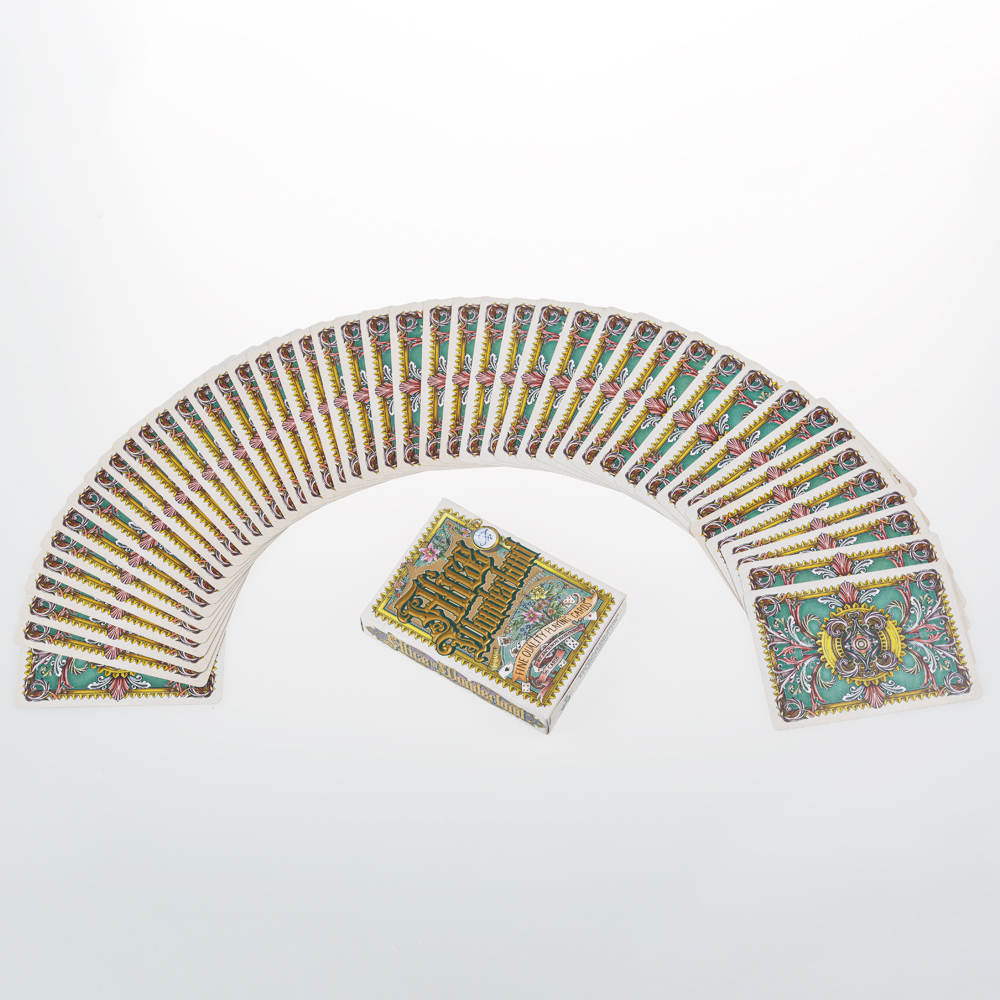Producets 7
Size
- Standardsize: The international standard playing cards are usually about 88mm inlength and 63mm in width, which are widely used in various poker games andoccasions, and are convenient for players to hold and operate.
- BridgeSize: The size of bridge playing cards is slightly smaller, generally 87 mmin length and 57 mm in width, which is suitable for bridge and other games thatrequire frequent holding and playing of cards, and the smaller size is moreconvenient for handling and organizing.
- Oversize:Some playing cards used for magic shows or special displays may beoversized, such as 150 mm in length and 100 mm in width or even larger, toenhance the visual effect.
- Minisize: about 45 mm in length and 32 mm in width, small and portable, oftenused for traveling or given as small gifts.
Materials
- Paper:Ordinary playing cards are usually made of paper, generally pressed frommultiple layers of paper, the surface of which has been specially treated togive it a certain degree of flexibility, smoothness and durability, commonly250 grams to 300 grams of coated paper or cardboard.
- Plastic:Plastic playing cards are waterproof, abrasion-resistant, not easy to damageand other advantages, more suitable for use in wet environments or frequentuse, such as casinos or outdoor games. Common plastic materials include PVC(polyvinyl chloride) and PET (polyethylene terephthalate).
-- Specialmaterials: Some high-grade playing cards or collector-grade playing cardsmay be made of special materials, such as parchment, linen, etc. Thesematerials are not only unique in texture, but also more durable and precious.
Craftsmanship
- Printingprocess: The printing process of playing cards usually includes offsetprinting, gravure printing, letterpress printing and so on. Offset printing canachieve rich colors and delicate pattern effects; intaglio printing can makethe pattern have a three-dimensional sense and a sense of hierarchy;letterpress printing is often used to print the text and numbers on the playingcards, so that they are more clear and prominent.
- Surfacetreatment: In order to increase the durability and feel of playing cards,surface treatment is usually carried out, such as lamination and varnishing.Lamination can make the surface of playing cards smoother, waterproof andwear-resistant; varnishing can increase the gloss and texture of playing cards.
- Cuttingprocess: The cutting of playing cards is very demanding, and it isnecessary to ensure the precision of each card's size and the flatness of theedges. Advanced cutting equipment can ensure that the edges of playing cardsare smooth and burr-free, and the size error between each card is extremelysmall.



